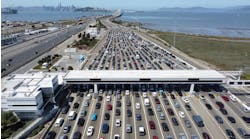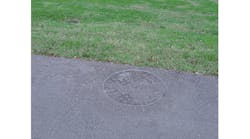Artificial intelligence (AI) traffic management and transit solutions provider Waycare this week announced the results of a year-long program aimed at curbing traffic incidents on Southern Nevada roads.
The program included the collaboration of the Nevada Department of Public Safety (DPS) Highway Patrol (NHP) Division, the Regional Transportation Commission of Southern Nevada (RTC), and the Nevada Department of Transportation (NDOT). The results showed an 18% reduction in primary crashes and a 43% reduction in the percentage of speeding drivers along key corridors on I-15 and U.S. 95 in Southern Nevada. A cost-benefit analysis showed a 16x return on the initial investment and more than $3 million in economic benefit and savings.
The program, funded by the National Safety Council’s Road to Zero grant, was awarded to the agencies to expand the use of AI, intelligent transportation system (ITS) devices, and strategic police positioning to decrease speed on high-risk roads. By implementing an innovative approach combining AI and predictive analytics, the program was able to strategically identify high-risk corridors and deploy dynamic preventative measures.
Waycare says it uses proprietary AI algorithms to identify specific corridors and times at a higher risk of crashes derived from existing local data sets. Based on the analysis of Southern Nevada, the deployment focused on three key corridors along I-15 Northbound near Russell Rd., U.S. 95 Southbound near Jones Blvd., and I-15 Southbound near Lake Mead Blvd. NHP troopers were periodically positioned at strategic traffic management sites (STMS) to increase driver caution and vigilance. In tandem, the RTC regularly activated dynamic messaging signs (DMS) to reinforce speed limits and preemptively slow traffic.
“The combination of emerging technologies together with the collaboration of law enforcement has proven to be successful in enhancing safety, preserving capacity, and effectively communicating with Southern Nevada drivers,” M.J. Maynard, RTC chief executive officer, said in a statement. “The use of AI-based insights helped identify potential target areas, allowing us to increase safety and plan for preventative actions in the future.”
In addition to safety benefits, the program resulted in substantial economic savings—totaling $3,000,993—as a result of preventing property damage, medical costs, productivity loss caused by travel delays, and other agency incurred expenses due to road crashes, the RTC says.
-----------
SOURCE: Regional Transportation Commission of Southern Nevada












